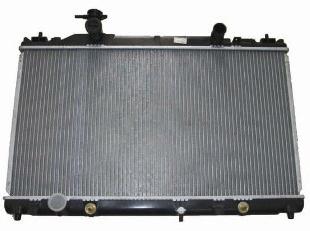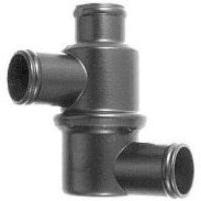The cooling system of the VAZ 2109, the engine and the manifold, is considered one of the most effective automotive developments for internal combustion engines. All components and assemblies of the system are built on the principle of compensation adjustment. The liquid cooling circuit of a running engine is closed and completely sealed. Any, even slight depressurization of the system - and the cooling mode will be violated. The engine will overheat, the coolant will boil and the car will stand up. Therefore, at least once a month, you need to inspect all connecting hoses, pipes and gaskets.
If leakage of coolant is detected at the junction of the hose with the pipe, tighten the clamp. If the hose is cracked or frayed, replace it. And in the event of a
heater heater leak
, you will have to go to a car service, since all the connections of the tubes and nozzles of the stove are hidden and you can’t get to them in the usual way, you need a special tool. The VAZ 2109 cooling system allows troubleshooting without dismantling the nodes. If there is no leak anywhere, it is necessary to control the car's cooling system in any case. This is done using the expansion tank, which is located under the hood in a conspicuous place.

The tank has two designations on a plastic case, Min. and Max., two lines of coolant level. Exceeding the maximum level will give an unnecessary load on the safety valves and pump, and an excessively low level of antifreeze or water creates the risk of air jams in the system and an increase in the degree of heating, up to boiling. The VAZ 2109 cooling system is designed quite rationally. At a normal level, coolant evenly circulates in the cylinder block jacket, flows into the channels of the cylinder head, then enters the radiator, from the radiator to the passenger compartment heater, from the heater again into the block jacket, and so on endlessly in a closed circle.

The movement of the coolant is provided by the water pump, which rotates from the crankshaft of the engine. The pump receives fluid through the suction pipe and drives it, forcing it out of the exhaust pipe with force. This creates intense movement of the cooling component throughout the system. Adjusting the temperature of the running motor is necessary, since all components and assemblies of the engine are designed for a strictly defined temperature regime. The engine cooling system of the VAZ 2109 maintains an optimum temperature in the range of 85 - 95 degrees Celsius.

Heating within the specified limits is provided by the radiator, fan and thermostat. The radiator is a structure consisting of two tanks and a series of thin-walled copper tubes and plates that allow coolant to pass through. Passing through the radiator tubes, the liquid cools. The thermostat controls the process of lowering the temperature. It works on the principle of a shut-off valve; when the temperature rises, it opens the gateway. When the temperature decreases, the thermostat stops the circulation of the liquid.

The entire VAZ 2109 cooling system is built on the interaction of individual nodes. The action of the thermostat is duplicated by a fan, which is installed between the external grille of the engine compartment lining and the radiator. The fan is connected to a sensor mounted in the lower tank of the radiator. When the temperature rises, the sensor contacts close and the fan turns on. The impeller drives cold air throughout the radiator, the degree of heating of the coolant decreases and, thus, the temperature regime of the entire engine of the VAZ 2109 automobile is regulated, the cooling system of which is a reliable engineering development.